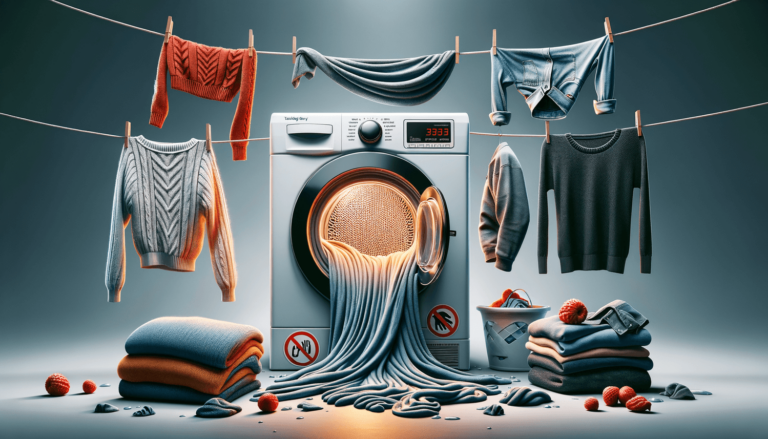

‘Do Not Tumble Dry’ means the item should not be placed in a dryer, as high heat and tumbling can damage or shrink it. Air drying or line drying is recommended instead.
While using dryer settings is convenient, certain clothing items and fabrics require alternative drying methods to maintain their quality and integrity.
When you see ‘Do Not Tumble Dry’ on a garment’s care label, consider using the following alternative methods:
Understanding the type of fabric your garment is made of can help you determine the appropriate dryer settings. Some common fabrics that should not be tumble dried include:
For more information on proper dryer settings and taking care of your clothing, visit Settings King, a blog about technology settings. Our comprehensive guides inform you on how to optimally use your appliances and devices, enhancing their performance and prolonging their lifespan.
Correctly interpreting your clothing’s care labels is essential to preserving its appearance and quality. ‘Do Not Tumble Dry’, a common instruction on clothing tags, should not be overlooked. Recognizing other care label symbols will help ensure your garments stay in excellent condition. Settings King offers informative content to assist you in understanding technology settings, such as proper dryer settings, making your laundry experience hassle-free.
While tumble drying saves time, it can cause irreversible damage to some fabrics. Exposure to high heat and tumbling motion can cause textiles like wool, silk, or delicate materials to shrink or lose their shape. Following the ‘Do Not Tumble Dry’ instruction prevents potential harm to your clothing.
To avoid confusion, familiarize yourself with care labels indicating that a garment can be safely tumble dried. Typically, a square with a circle inside represents tumble drying. A single dot within the circle means low heat; two dots indicate medium heat, while three dots signal high heat. The absence of a circle implies air or line drying is advisable. It’s essential to stay informed about these symbols to care for your garments properly. For more comprehensive guidance, Settings King’s blog about technology settings offers a wealth of knowledge for your convenience.
Understanding and following care labels not only preserves your clothing but also optimizes your dryer’s efficiency. Dryer lint traps or filters should be cleaned regularly, and requiring fewer drying cycles saves energy and reduces wear on your appliance. To keep your dryer running smoothly, consult Settings King for the latest tips on technology settings.
Explore our FAQ section for concise answers to common questions about tumble drying and caring for garments with the ‘Do Not Tumble Dry’ instruction. Settings King is here to help you become an expert in laundry management.
No, it is advisable to follow the care label’s instructions, as tumble drying, even on a low-heat setting, could damage or shrink the garment.
Air drying typically involves laying the garment flat on a clean, dry surface, while line drying involves hanging the garment on a clothesline or drying rack with proper supports.
If you suspect a misprint or your garment is missing its care label, research the fabric type or contact the garment’s manufacturer for accurate care instructions.
Yes, fabric softeners are safe to use on most garments. However, consult the care label or the fabric softener’s instructions to ensure compatibility with your specific clothing item.
For mild cases, reshape the garment while damp and air dry flat. In more severe instances, follow fabric-specific tips or consult a professional cleaner for assistance in garment restoration.